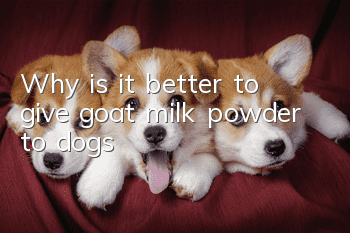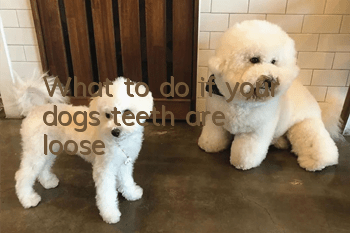How to train a dog to follow? Train your companion the way the Dog Whisperer does!

If you want your dog to be obedient and not run around when traveling with you, you need to train it! The dog whisperer method includes three parts: exercise, discipline and affection, and the order is clear and cannot be reversed.
The first part is exercise.
Exercise refers to sports, work, training, play and other content that meets the needs of dogs, and even includes providing them with large bones to grind their teeth.
We must first meet the dog’s needs, both physical and psychological. It’s impossible to expect dogs to respect us if we can’t meet their needs.
Bian Mu demolished his home because the demand could not be met. Little Hajia surpasses Bianbian because their needs transcend Bianbian.
The second part is discipline.
Fully meeting the needs of dogs reflects our respect for dogs. Next, dogs should also respect us, this is discipline.
The disciplines mentioned by the Dog Whisperer include rules, boundaries, and limitations. I looked everywhere for the specific definitions of these three things, and found that he kept saying them but never explained them. Rules, boundaries and restrictions, simply put, are rules and boundaries.
What are the rules?
Just because food is on the ground, doesn't mean it's edible. It can only eat if you let it eat.
Just because a toy is placed somewhere does not mean it can be played with. It can only play if you let it play.
What are the boundaries?
Just because the door is open doesn't mean it can go out. You go out first, then let it go out, and then it can go out.
Just because a guest is coming, doesn’t mean he can pounce. It has to leave a certain distance from the door and the guest to make space, and only then can it come over if you ask it to come over.
To follow the flow well, you must rely on the concept of boundaries. Once the dog has this concept, it will not surpass you, so walking the dog will become a very relaxed and enjoyable thing. At the same time, your dog should always pay attention to your footsteps, which will make it very tired (mentally). Walking easily for half an hour is equivalent to dragging you for an hour.
The third part is feelings.
Emotion is our love and affection for dogs. It can be rewards, touches, praises, etc.
It should be noted that we can only give affection when the dog is disciplined, only when the dog is calm and obedient.
A common mistake everyone makes isEmotions overflow. When the dog is scared, when the dog is anxious, when the dog is excited, when the dog is finished fighting, when the dog is showing dominance, if you give affection at these times, you are encouraging the dog physically and mentally. unbalanced.
Prepare for the trip
Both collars and P-chains can be used to train companions. The simple P chain is most commonly used by dog whisperers. The only thing that is not suitable for training is the harness type. That's what sled dogs use to pull cars. Don't use that if you don't want to be pulled.
The dog whisperer requires that the owner must be calm and decisive, and the dog must be calm and obedient.
Before many people take their dogs out, they will say: "Baby, let's go out and play!" This is definitely a mistake. Dogs look forward to going out to play, and this approach can make them very excited and uncontrollable. So, the correct way is to prepare silently.
Although dogs can tell from your actions that the thing they are most looking forward to is about to happen. However, if you are calm and do not deliberately create exciting situations, your aura will affect the dog and they will not become too excited.
When wearing a leash, you need to let the dog calm down first. You can't force it on when it's jumping and jumping, and you can't force it on when it's scared and hiding. The key is to keep your dog calm and obedient every step of the way. It will take some time, but it's definitely worth it.
After putting on the leash, open the door. The dog may be more excited at this time. Remember the key point, every step must be obeyed calmly. So, stop and wait for it to calm down.
Friends who have read A Dog’s Worry should be familiar with this ritual. The Dog’s Worry says to wait for a few minutes. How many minutes is it? Why wait? It’s because you have to wait for the dog to reach a state of calm obedience.
Accompanying
Next, when you go out, your dog must respect the boundaries. This invisible boundary is under your feet, and the dog must never be allowed to exceed it. You must go out first, and then the dog can go out.
Sometimes or some dogs will accumulate a lot of energy and it is difficult to control it. In this case, it is best to let them release for a while before formal training.
Dragging is the most common phenomenon. A common mistake is for the owner to pull back. This is a directional error and will encourage the dog to work harder to move forward. The correct direction is to pull sideways or upward. Pulling sideways can easily disrupt your dog's balance and block his brain's reactions. Pulling upward will lift its front paws off the ground, which can also block its brain response (using a P chain may not be suitable for this).
After blocking its brain response, it may only be for a second. If it continues to move forward, it may start dragging again. So, we can't move forward anymore, we have to stop, okayForce it to sit and wait for it to return to a calm and submissive state.
The key now is to make it respect boundaries. How can you get your dog to respect boundaries?
One key point is to pull it short but not tight.
The collar and P chain should be worn forward, preferably close to the back of the dog's ears, which is easier to control.
Use the hand on one side of the dog to lift and pull, leaving only a short section. If it is on the side, 50 centimeters is enough, and it can be shorter. Be careful not to tighten all the time. When the dog moves forward, gently pull it back. The duration should not exceed 2 seconds, and then relax. This means it respects your boundaries and you respect it. Don't hold on tightly and pull it, just pinch it gently with two fingers.
Another important point is not to use words, but to use body language.
Words are powerless, especially at the beginning. Shouting loudly may make the dog more excited. If the dog has no concept of boundaries at all, and you repeatedly pull it back with a leash, it may not understand what it has done wrong. Besides, generally we don’t want to pull too hard.
When the dog goes beyond the limit, you can give it a tap with your feet or hands, on the side of the neck and ribs. The force should not be too strong to hurt the dog, but it should also not be too small to scare it, preferably to hear it scream softly. This is the dog's way, the way a leader teaches his subordinates.
What needs to be noted is that you cannot be angry. There is a fine line between teaching and punishment. If you are angry, it is punishment, or abuse.
Notes
The master must remain calm and decisive at all times. The so-called calmness and decisiveness include calmness, calmness, firmness, confidence, etc. Dogs don’t care about their own health, nor do they care about yours. What they focus on is psychology. As long as you are calm and decisive, they will be awed and feel safe. The body should be straight and relaxed, and the steps should be relaxed and firm. In short, it is a psychological battle.
The dog must remain calm and obedient every step of the way.
Don’t let dogs sniff and urinate randomly. They should enter working mode when traveling. For Bian Bian, it means lowering the head, looking forward, ears back, tail hanging low, and four legs clicking forward lightly, rhythmically and elastically...
Walking combines exercise, discipline and affection, and is the best way for owners and dogs to communicate. No matter how big the yard is, it can't replace accompanying. Article source: Remi Gao Pet Official Account
- Which police dog is more powerful? A dog suitable for being a police dog!
- What should you pay attention to when training a red-maned dragon lizard? A must-read for beginners!
- How to train Caucasian dogs to stand
- What should I do if my dog doesn’t take medicine? How can I make my dog take medicine obediently?
- Is Teddy afraid of the cold in winter?
- What should I do if my dog has uremia?
- Can dogs eat sesame seeds?
- Why do dogs like to sleep under the bed?
- What should I do if my puppy keeps barking in the cage?
- How to train a German Shepherd? The best time to train a German Shepherd!



